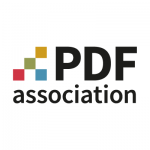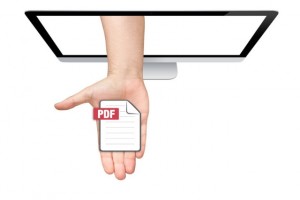
PDF in financial services: now and the future
Although they are utterly reliant on PDF, modern financial services institutions still leverage only the most rudimentary fraction of PDFs capabilities.
 Its reasonable to claim that without PDF technology the financial services sector would operate very differently. PDFs key characteristics are perfect for businesses that generate, share, store and argue over a high volume of records and reports on their activities.
Its reasonable to claim that without PDF technology the financial services sector would operate very differently. PDFs key characteristics are perfect for businesses that generate, share, store and argue over a high volume of records and reports on their activities.
For most, the simple fact that PDF is a rendering of some source content is why they use it. Database records are fungible, source-documents are both changeable and harder to share. PDF files are small, they can contain content from any source and the software to view them is free. Theres really no competition for PDF for this mix of features, so its the default choice for hardcopy electronic documents.
For banks, insurance companies, investors and their associated attorneys, PDF is a critical medium for documenting and reporting on the billions of transactional and other events that underpin the movement of money. Statements, invoices, contracts, reports and many other types of documents are routinely, and on a massive scale, committed to PDF.
And yet, modern financial services institutions, and the regulators who oversee them, today leverage only the most rudimentary fraction of PDFs capabilities.
Where will PDF go from here?
By replacing paper in so many cases, PDF has already delivered massive cost savings and improved customer service in world of financial sector. Many millions of subscribers, account-holders and others now receive their statements and invoices in electronic form, and in almost all cases, that form is a PDF file. This fact alone saves major institutions hundreds of millions in reduced printing, postal and customer service costs.
Although accepted everywhere, PDF remains under-utilized, with unique built-in capabilities that only a few financial services organizations yet leverage.
Lets review just a few ways in which the advanced use of PDF technology is continuing to change the way we do business.
Identity and authentication: As a vehicle for self-contained, reliable, authenticated and secured content, PDF really is the complete package. With digital signature technology, PDF provides electronic documents a generic model for several valuable document functions, including tamper-proofing, time-stamping and version control. Digital signatures offer powerful solutions for streamlining workflows, certification origins, facilitating revocation, access control and much more.
Transaction automation: Ideally, business processes in the financial sector that require an authoritative printable document would also be easy to process, reducing errors, and the costs of data-capture. With PDF, its possible to embed a machine-readable version of that same document, to enable fully-automated capture of relevant content immediately on entry while retaining the formal document in a fixed, human-readable form.
Retention practices: The archival standard for PDF is known as PDF/A, and its been heavily adopted by government agencies across the world, including in the US. While the SEC's still a bit behind the times with their EDGAR rules for filings, the National Archives and Records Administrations new Transfer Guidance recommends PDF/A for archiving electronic records. Designing document workflows with PDF/A in mind reduces risks, and is increasingly seen as a conventional best-practice.
Achieving Americans with Disabilities Act (ADA) compliance: Access to electronic documents is increasingly understood as one of the fundamental civil rights. While only a few banks have begun to deploy accessible documents, tagged PDF technology contributes towards meeting obligations to deliver accessible formal documents.
Learn more about what PDF technology can do at PDF Day, December 10 in Washington DC and December 11 in New York City.




